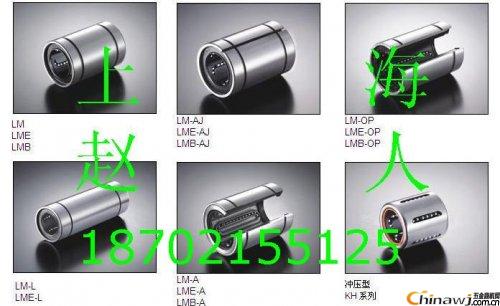How to Fix KBS Linear Bearing Failures During Operation
The first step in addressing KBS linear bearing failure is to check the condition of the lubricant. By analyzing the lubricant, you can determine if it has been contaminated with foreign particles or metal dust. If necessary, additional lubricant should be added to maintain proper function.
Another method to identify potential issues is by monitoring the bearing's operating temperature. This approach works best when the operating conditions remain stable. To do this effectively, continuous temperature recording is essential. If the temperature becomes too high, it can lead to accelerated wear and damage to the bearing. In such cases, cooling measures should be taken immediately to prevent further deterioration.
Regular maintenance and inspections are also crucial in preventing bearing failures. Ensuring that the bearing is properly aligned, free from excessive load, and regularly lubricated can significantly extend its lifespan. Additionally, using high-quality lubricants that match the manufacturer’s specifications will help reduce the risk of failure.
For more information on industrial bearings and maintenance solutions, visit www.chinawj.com.cn.

Editor: Hardware Business Network Information Center | http://news.chinawj.com.cn

A hydraulic valve is a device used to control the flow and pressure of hydraulic fluid in a hydraulic system. It is typically made up of a valve body, which contains the necessary ports and passages for fluid flow, and a valve spool or poppet, which is responsible for regulating the flow of fluid.
Hydraulic valves can be classified into various types based on their function and design. Some common types include:
1. Directional control valves: These valves control the direction of fluid flow in a hydraulic system. They typically have multiple ports and can be used to control the movement of hydraulic cylinders or motors.
2. Pressure control valves: These valves regulate the pressure of the hydraulic fluid in a system. They can be used to maintain a specific pressure level or limit the maximum pressure.
3. Flow control valves: These valves control the rate of fluid flow in a hydraulic system. They can be used to adjust the speed of hydraulic cylinders or control the flow to different actuators.
4. Check valves: These valves allow fluid flow in one direction while preventing it from flowing back in the opposite direction. They are commonly used to maintain pressure in hydraulic systems or prevent backflow.
Hydraulic valves are essential components in hydraulic systems, as they enable precise control and efficient operation. They are commonly used in various industries, including manufacturing, construction, agriculture, and automotive.
Hydraulic Valve,Hydraulic Throttle Valve,Hydraulic Spare Part Throttle,Hydraulic Accessory Throttle Valve
Yantai Dongyue Hydraulic Technology Co., Ltd , https://www.deeleap.com